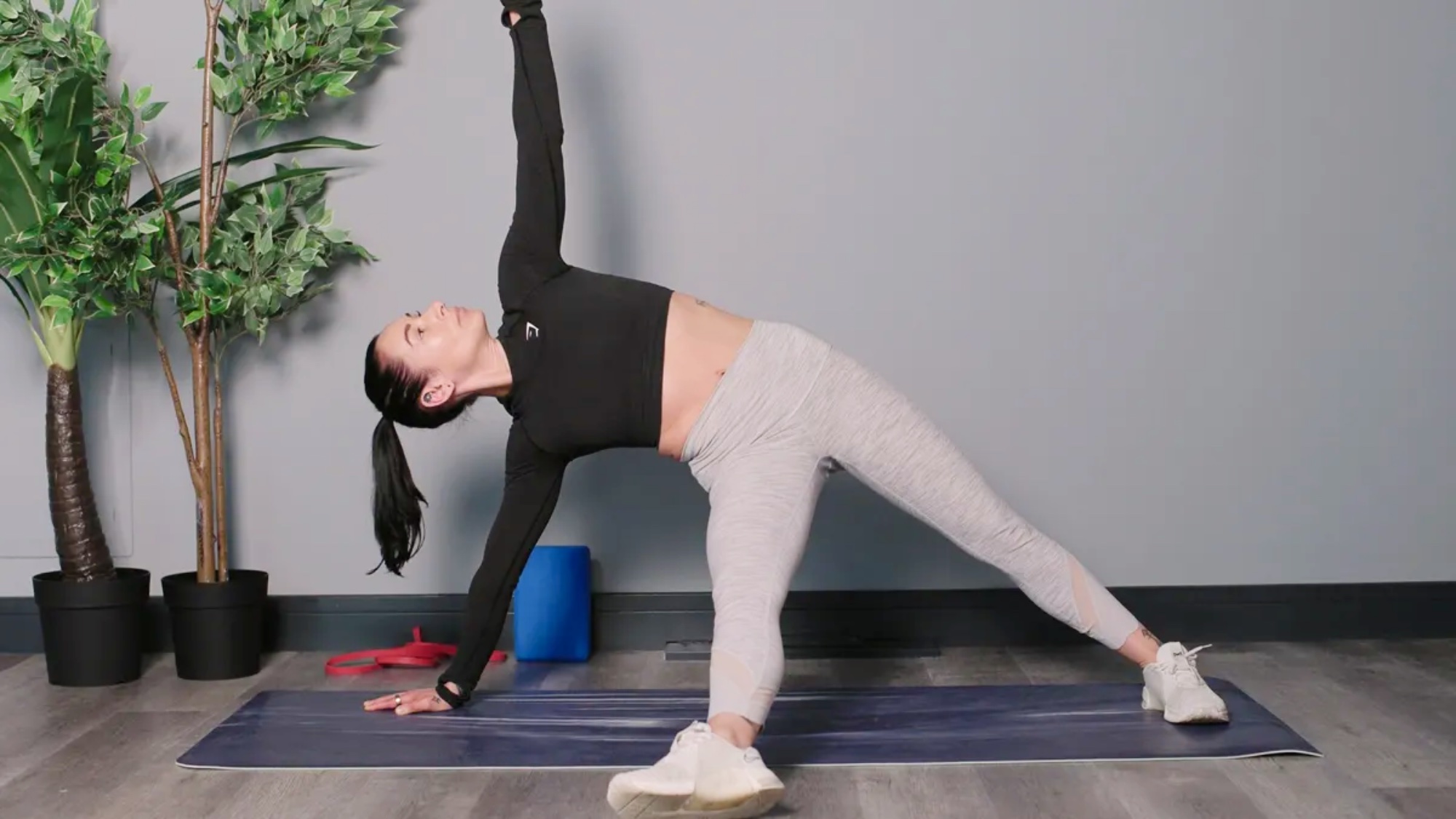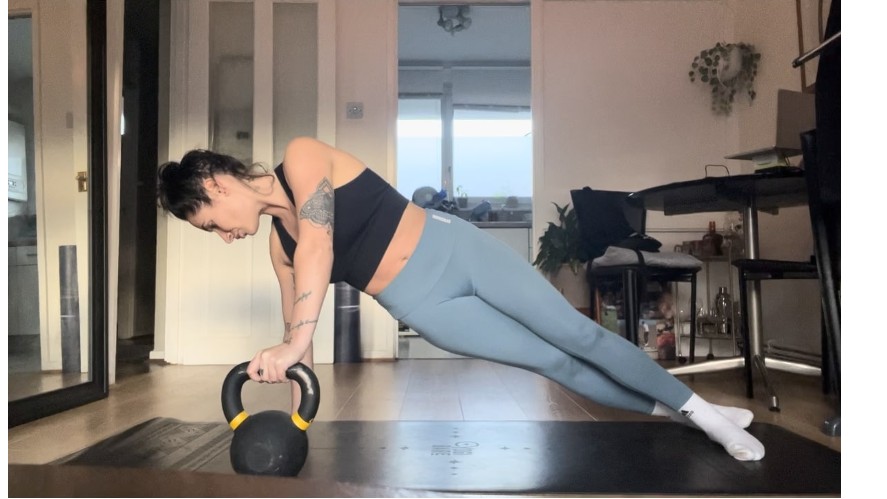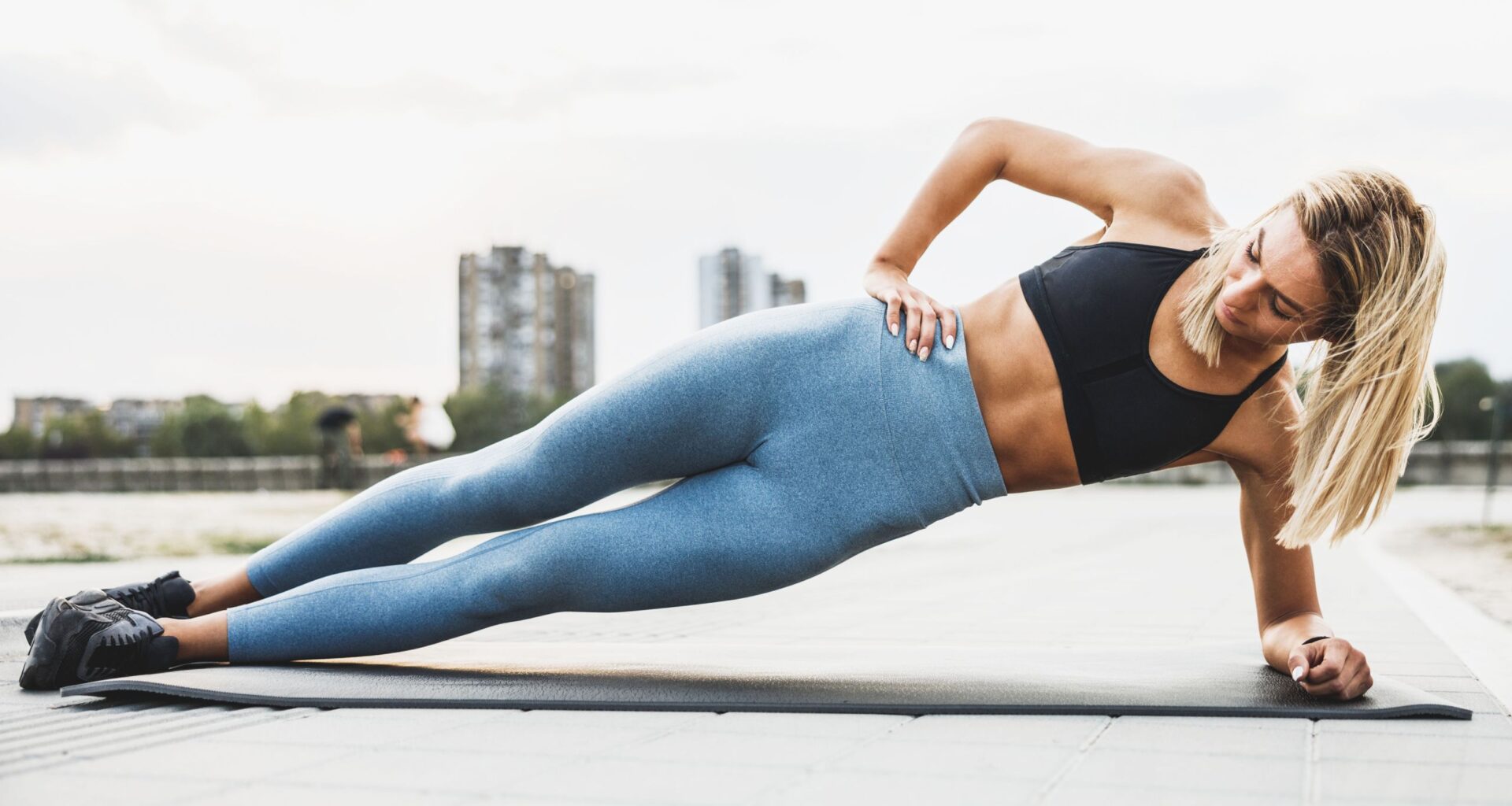I don’t mind planks, but one of my problems with a standard plank is that the obliques don’t get hit hard enough for my liking. This side plank alternative is torture on your obliques, shoulders, and abs, and comes with a side of balance work.
Forget sit-ups, Russian twists, or boring old crunches, because we’re about to heat things up with the starburst plank instead, and it’s a core-torcher worthy of melting even the strongest midsections.
Here’s how to do starburst planks step-by-step, and all the benefits you can expect to gain from adding them to your core routines.
You may like
How to do the starburst plank

(Image credit: Future)Start in a plank position with your shoulders stacked over your wrists and hips aligned with your shouldersEngage your core, glutes, and quadsDrive your right leg across and under your body, and place the outer foot wide and to the left of youExtend your left arm toward the ceiling and open your chestHold the side plank position, stacking your right shoulder over your wrist and creating one straight line from hand to handPress your hips upward and keep both legs straightTry hovering your right leg away from the ground for a challengeHold, then return to plank and switch sides.What are the benefits?
Starburst planks use rotation of the waist to better engage your oblique muscles, which run down your sides and activate during rotational or lateral movement. Side planks in general strengthen your shoulders, forearms, and wrists, and work the abs, hips, and glutes. If you choose to lift your leg into the air, you can better challenge your balance, leg, and core strength.
By lifting your top arm into the air, you can also stretch your chest and the frontal deltoid (shoulder); extending your top arm to the front of the space adds a delicious side stretch.
You can capitalize on waist engagement by keeping both hands pressed into the mat beneath you and focusing on squaring your chest to the ground while extending your leg away from you. This will also deliver a strong stretch down the outer thigh and glutes (think regular plank, but with your leg still kicking through).
Here’s what I’ve learned from practicing it

(Image credit: Sam Hopes)
Practicing any kind of side plank (see above a kettlebell side plank) is challenging for me, especially because it requires stabilization of the shoulder and balancing on one arm, and I have an unstable rotator cuff muscle on my left side.
If you’re unfamiliar with the rotator cuff, it’s a group of muscles that support your shoulder blades and stabilize the shoulders. This variation always gets me wobbling and shaking, regardless of how much I practice it.
I opted for 30 seconds per side and 3 rounds, which was plenty enough for me, but you could opt for more rounds or more or less time. I added it to my Pilates and yoga routine, and focused on engaging my waist. It’s a great way to challenge your endurance and balance by loading one side of the body at a time, aiding stability in a static position known as an isometric contraction. If you are new to the exercise, gaze down at your mat for extra balance.
I’m quite used to planking, so I opted to hover my leg away from the mat on both sides, which increased the chore on those little stabilizer muscles around my body to keep me upright rather than crashing to the floor.
Your next read
Your hip flexors work to help you raise and hold your leg in the air, so this is a great way to increase hip activation if you’d like an extra challenge. Adding the leg lift tests hamstring flexibility and hip strength, so give it a try, but don’t force it.
I found that after a week of adding starburst planks into my routine, my left shoulder was achy. Just remember that while this was a little challenge for me, you don’t need to plank every day to feel and see the benefits, and that goes for all exercise. Take rest when you need it, and experiment with a frequency that works for you.
Moreover, manage expectations around body composition — muscle definition comes from low body fat percentage and muscle growth, so while planks and their many variations can strengthen your body, this won’t guarantee you a six-pack. What planks will do is target superficial and deeper internal muscle groups responsible for posture and stabilization, so they’re well worth doing regardless.

Follow Tom’s Guide on Google News and add us as a preferred source to get our up-to-date news, analysis, and reviews in your feeds.
More from Tom’s Guide
Back to Yoga Mats
SORT BYPrice (low to high)Price (high to low)Product Name (A to Z)Product Name (Z to A)Retailer name (A to Z)Retailer name (Z to A)![]()
Show more

